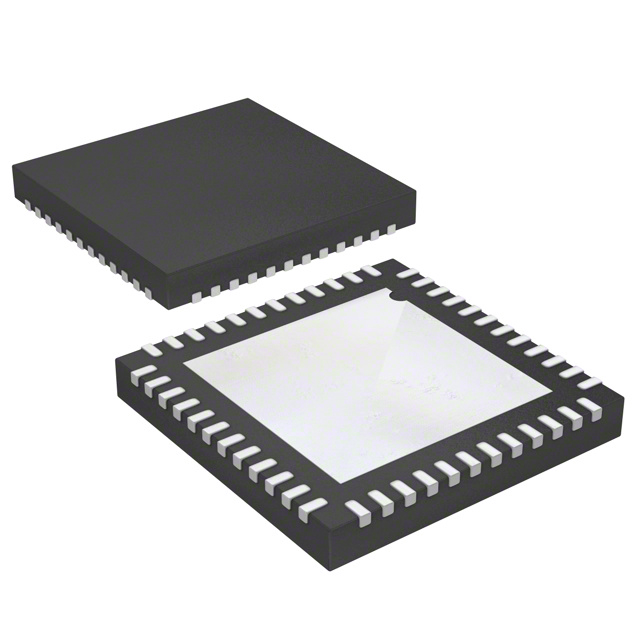AD7631BCPZ
Product Overview
Category
AD7631BCPZ belongs to the category of analog-to-digital converters (ADCs).
Use
The AD7631BCPZ is used for converting analog signals into digital data. It is commonly employed in various applications that require precise and accurate conversion of analog signals, such as industrial automation, medical equipment, and scientific instrumentation.
Characteristics
- High resolution: The AD7631BCPZ offers a resolution of up to 18 bits, ensuring accurate digitization of analog signals.
- Fast conversion rate: With a maximum sampling rate of 1 MSPS (Mega Samples Per Second), it can quickly convert analog signals into digital form.
- Low power consumption: The device is designed to operate with low power consumption, making it suitable for battery-powered applications.
- Wide input voltage range: It supports a wide input voltage range, allowing it to handle a variety of signal amplitudes.
- Integrated features: The AD7631BCPZ incorporates various features like programmable gain amplifiers, reference buffers, and digital interfaces, enhancing its versatility and ease of use.
Package and Quantity
The AD7631BCPZ is available in a small form factor package known as LFCSP (Lead Frame Chip Scale Package). It comes in a quantity of one unit per package.
Specifications
- Resolution: Up to 18 bits
- Sampling Rate: Up to 1 MSPS
- Input Voltage Range: ±10V
- Power Supply: +5V
- Operating Temperature Range: -40°C to +85°C
Pin Configuration
The AD7631BCPZ has a total of 32 pins arranged in a specific configuration. The detailed pinout diagram can be found in the datasheet provided by the manufacturer.
Functional Features
- High-resolution conversion: The AD7631BCPZ provides accurate and precise conversion of analog signals into digital form.
- Programmable gain amplifiers: It offers programmable gain amplifiers that allow users to adjust the gain according to their specific requirements.
- Reference buffers: The device incorporates reference buffers to ensure stable and reliable voltage references for accurate conversions.
- Digital interfaces: It supports various digital interfaces like SPI (Serial Peripheral Interface) and I2C (Inter-Integrated Circuit), enabling easy integration with microcontrollers and other digital systems.
Advantages
- High resolution and fast conversion rate enable accurate and rapid digitization of analog signals.
- Low power consumption makes it suitable for battery-powered applications.
- Wide input voltage range allows handling of various signal amplitudes.
- Integrated features enhance versatility and ease of use.
Disadvantages
- Limited quantity per package may not be sufficient for large-scale applications.
- Requires external power supply (+5V) for operation.
Working Principles
The AD7631BCPZ utilizes a successive approximation technique to convert analog signals into digital data. It samples the analog input, compares it with a reference voltage, and iteratively adjusts the digital output until an accurate representation of the analog signal is achieved.
Application Field Plans
The AD7631BCPZ finds extensive application in various fields, including: 1. Industrial automation: Used for precise measurement and control in industrial processes. 2. Medical equipment: Enables accurate data acquisition in medical devices like patient monitors and diagnostic instruments. 3. Scientific instrumentation: Utilized in scientific research and experimentation for data acquisition and analysis.
Alternative Models
There are several alternative models available in the market that offer similar functionality to the AD7631BCPZ. Some notable alternatives include: - AD7685: A 16-bit ADC with similar specifications and features. - LTC1867: An 18-bit ADC with differential inputs and high accuracy. - MAX11100: A 20-bit ADC with integrated multiplexers and low power consumption.
These alternative models can be considered based on specific application requirements and design constraints.
In conclusion, the AD7631BCPZ is a high-resolution analog-to-digital converter that offers fast conversion rates and low power consumption. Its versatile features and wide range of applications make it a popular choice in various industries.
Senaraikan 10 soalan dan jawapan biasa yang berkaitan dengan aplikasi AD7631BCPZ dalam penyelesaian teknikal
Sure! Here are 10 common questions and answers related to the application of AD7631BCPZ in technical solutions:
Q1: What is AD7631BCPZ? A1: AD7631BCPZ is a high-performance, 18-bit, successive approximation analog-to-digital converter (ADC) manufactured by Analog Devices.
Q2: What is the resolution of AD7631BCPZ? A2: AD7631BCPZ has a resolution of 18 bits, which means it can represent analog signals with high precision.
Q3: What is the sampling rate of AD7631BCPZ? A3: AD7631BCPZ has a maximum sampling rate of 1 MSPS (Mega Samples Per Second), allowing for fast and accurate conversion of analog signals.
Q4: What is the input voltage range of AD7631BCPZ? A4: The input voltage range of AD7631BCPZ is typically ±10V, making it suitable for a wide range of applications.
Q5: Does AD7631BCPZ require an external reference voltage? A5: Yes, AD7631BCPZ requires an external reference voltage to determine the full-scale range of the ADC. It supports both internal and external reference options.
Q6: What is the power supply requirement for AD7631BCPZ? A6: AD7631BCPZ operates from a single power supply voltage ranging from 2.7V to 5.25V, making it compatible with various power sources.
Q7: Can AD7631BCPZ be used in low-power applications? A7: Yes, AD7631BCPZ features a power-down mode that reduces power consumption when the ADC is not actively converting signals, making it suitable for low-power applications.
Q8: What is the interface of AD7631BCPZ? A8: AD7631BCPZ features a serial peripheral interface (SPI) that allows for easy communication with microcontrollers or other digital devices.
Q9: Can AD7631BCPZ be used in industrial applications? A9: Yes, AD7631BCPZ is designed to operate in harsh industrial environments and can withstand high temperatures and voltage transients.
Q10: Are there any evaluation boards available for AD7631BCPZ? A10: Yes, Analog Devices provides evaluation boards and software tools to help users quickly prototype and evaluate the performance of AD7631BCPZ in their applications.
Please note that these answers are general and may vary depending on specific application requirements. It is always recommended to refer to the datasheet and consult with Analog Devices' technical support for detailed information.


